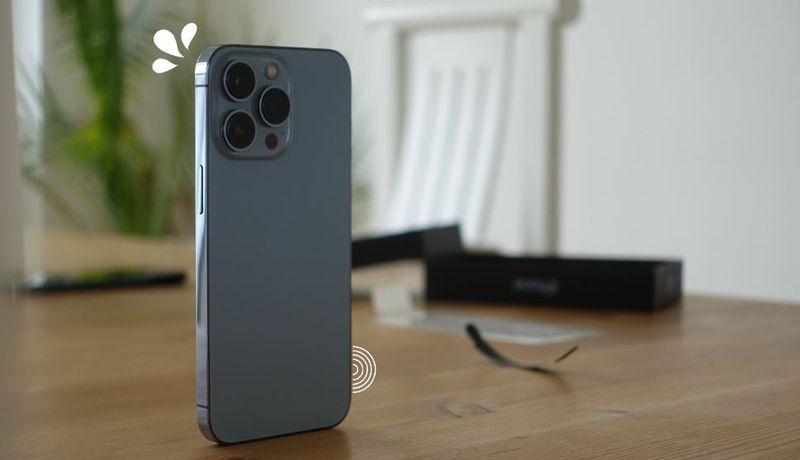Smartphones have seamlessly woven themselves into the fabric of our daily lives. However, amid the rapid evolution of technology, a plethora of myths and misconceptions about these devices have emerged. In this article, I aim to unveil the truth behind these common smartphone beliefs, providing you with accurate information to ensure your device remains in optimal condition and you can make informed decisions about its usage. Let's dive into the world of smartphones and separate fact from fiction.

Myth 1: Drain Your Battery Completely Before Recharging
Fact: False
A common misconception is that you should completely drain your smartphone's battery before recharging it. This was once true for older devices, but modern smartphones with lithium-ion batteries actually prefer being charged between 40% and 80%. Allowing your battery to consistently drain to zero may lead to the need for a replacement every six months.
Myth 2: Your Phone Is Safe Without a Screen Protector
Fact: True
In the past, screen protectors were essential to shield smartphone screens from scratches and cracks. However, today's phone screens are robust enough to handle daily use without additional protection. They are susceptible to sand and hard rocks, so unless you subject your phone to extreme conditions, a screen protector is unnecessary.
Myth 3: You Can Dry a Wet Phone with a Hair Dryer
Fact: False and Risky
Drying a wet phone with a hairdryer is not recommended. While it's technically possible, the excess heat can damage your device. Instead, consider alternative methods like using uncooked rice to absorb moisture.
Myth 4: Rice Can Save a Wet Phone
Fact: False
The myth that placing a wet phone in a bag of rice can save it is incorrect. Rice can absorb moisture from the surface but not from inside the phone. Additionally, rice starch can infiltrate the phone's cracks, potentially causing further damage.
Myth 5: Charging Overnight Is Bad for Your Phone
Fact: False
Charging your phone overnight is no longer a concern. Modern smartphones have safeguards in place to prevent overcharging. Once your battery reaches 100%, the charging process automatically stops.
Myth 6: Closing Background Apps Saves Battery
Fact: False
Contrary to popular belief, manually closing background apps does not save battery life. Modern smartphones effectively manage open apps and use multitasking algorithms to conserve power. Manually closing apps can even result in increased power consumption.
Myth 7: More Megapixels Mean Better Photos
Fact: False
The number of megapixels in a phone's camera does not necessarily determine photo quality. Quality and not quantity matter more. Increasing megapixels without improving the sensor can lead to diminished image quality.
Myth 8: Keeping Your Phone Near a Credit Card Demagnetizes It
Fact: False
Contrary to the myth, keeping your phone near a credit card won't demagnetize it. Your smartphone's magnetic field is not strong enough for this to happen.
Myth 9: Using Free Public Wi-Fi Is Safe
Fact: True
Free public Wi-Fi can be convenient, especially when traveling. However, it's crucial to exercise caution and use a VPN when connecting to such networks. Free public Wi-Fi is open to anyone, including potential hackers who can intercept your data.
Myth 10: 4G Eats More Data than 3G
Fact: False
4G and 3G consume similar data volumes. While 4G may use slightly more battery power, it's not significantly different. You can switch to 3G if you want to conserve battery life.
Myth 11: Fast Chargers Can Damage Your Phone
Fact: False
Fast chargers do not damage your phone's battery. They send more electricity to your device to charge it more quickly, but this process is controlled and safe for your smartphone.
Myth 12: More RAM Means a Better Phone
Fact: False
Phones with excessive RAM are not necessary unless you constantly run multiple apps simultaneously. Phones with 4GB or 3GB of RAM, combined with a powerful processor, work efficiently for typical smartphone usage.
Myth 13: 4K Display is Essential for Your Phone
Fact: False
4K displays are unnecessary for smartphones, as the human eye cannot perceive the difference on small screens. Higher resolution screens drain more battery without significant benefits.
Myth 14: Smartphones Emit Harmful Radiation
Fact: True
Smartphones emit electromagnetic radiation, but it is safe for humans. They do not pose any significant health risks. The myth of cooking an egg between two phones is just an urban legend.
Myth 15: You Can't Use Your Smartphone While Charging
Fact: False
It is entirely safe to use your smartphone while it's charging. However, it may slow down the charging process.
Myth 16: Phones Charge Faster in Airplane Mode
Fact: Partly True
Switching to airplane mode can speed up the charging process slightly by reducing energy usage, but the difference is minimal, saving only a few minutes.
Myth 17: Your Smartphone Can Interfere with Plane Systems
Fact: True
Multiple smartphones not in airplane mode can interfere with a plane's flight systems. It's crucial to follow airline instructions and switch to airplane mode during flights.
Myth 18: Removing the SIM Card Makes You Untraceable
Fact: False
Taking out the SIM card does not make you untraceable. GPS technology can still locate your smartphone, even without the SIM card.
Myth 19: Plastic-Based Smartphones Are Inferior
Fact: False
Plastic-based smartphones have their advantages, including being lighter, cheaper, and more durable. They perform just as well as metal or glass-based phones.
Myth 20: Only Original Chargers Are Safe
Fact: False
Quality third-party chargers and cables are safe for your smartphone. They come with built-in safety mechanisms and won't harm your device.
Myth 21: Automatic Brightness Mode Saves Battery
Fact: False
While dimming your screen can save battery, the automatic brightness mode, driven by a light sensor, might consume more power as it constantly adjusts to the surroundings. Manual brightness control can be more efficient.
Debunking these common smartphone myths provides you with valuable information for maintaining your device. Understanding the truth behind these misconceptions can help you make informed decisions and keep your smartphone in excellent condition.



You must be logged in to post a comment.